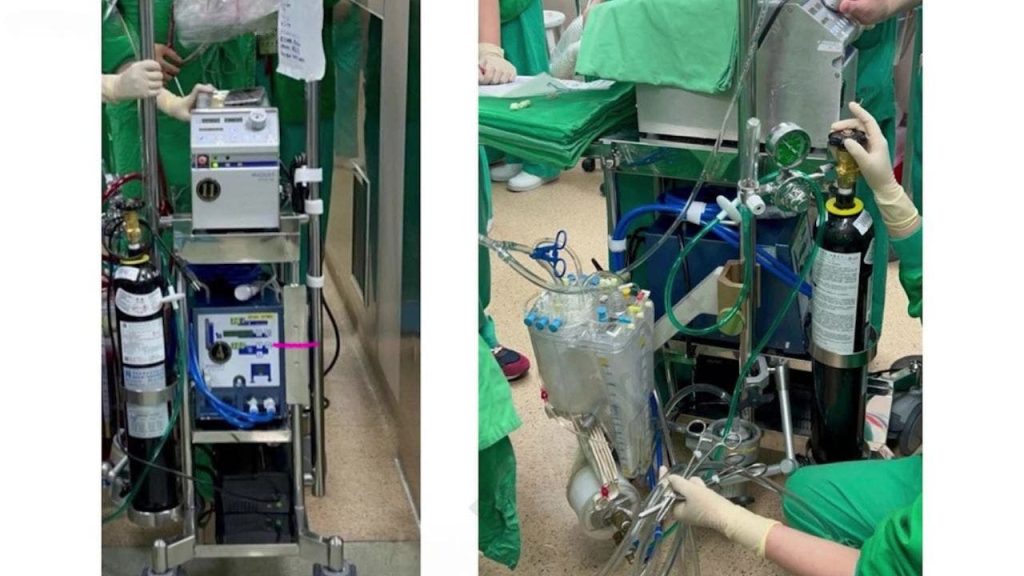In a groundbreaking medical achievement, surgeons at National Taiwan University Hospital (NTUH) have successfully conducted the world’s first heart transplant where the donor heart remained continuously beating throughout the procedure. This innovative technique, which eliminates the traditional ischemic time—the pause in blood flow inherent in conventional heart transplants—could greatly reduce damage to the heart muscle and enhance recovery outcomes for patients. With the heart actively pumping oxygenated blood during the entire transplant process, NTUH’s method sets a new standard in cardiac surgery.
| Article Subheadings |
|---|
| 1) Key Innovations in Heart Transplant Technology |
| 2) The Process Behind Continuous Beating Hearts |
| 3) Previous Attempts and their Limitations |
| 4) Future Implications for Heart Transplants |
| 5) Testimonials and Case Studies |
Key Innovations in Heart Transplant Technology
The recent success at NTUH is a significant advancement in organ transplant technology. Traditionally, heart transplants have involved cold storage of the donor heart, which necessitates a crucial period of paused blood flow. This ischemic time can cause extensive damage to the heart muscle, increasing the likelihood of complications and rejection post-surgery. NTUH’s method utilizes a custom organ care system akin to a portable life-support machine that continuously delivers oxygenated blood to the heart during its transportation from donor to recipient. This revolutionary approach not only maintains cellular vitality but also dramatically improves the overall prognosis for patients.
The Process Behind Continuous Beating Hearts
The organ care system employed by NTUH was inspired by Extracorporeal Membrane Oxygenation (ECMO), a life-support technology used for patients with severe heart and lung conditions. The system comprises a series of pumps, oxygenators, and reservoirs designed to keep the heart beating outside the body. During the inaugural surgery, a donor heart was meticulously transported between operating rooms while still connected to this apparatus. The recipient, a 49-year-old woman suffering from dilated cardiomyopathy, displayed an auspicious recovery, marked by remarkably low cardiac enzyme levels—indicators of heart muscle health—throughout the postoperative period.
Previous Attempts and their Limitations
Before NTUH’s groundbreaking achievement, Stanford University had made strides in performing ‘beating-heart’ transplants, yet their approach still included brief ischemic periods during the transfer of organs. This 10 to 30-minute delay could compromise the heart’s overall viability. In opposition, NTUH’s technique ensures that the heart remains in an active, functioning state from procurement to transplantation, thus eliminating potential risks associated with ischemic injury. Dr. Chen Yih-shurng, head of NTUH’s organ transplant team, noted, “The hearts were still beating before procurement, continued beating after procurement and never stopped.” This continuous function is pivotal for maintaining myocardial health.
Future Implications for Heart Transplants
With two successful transplants under its belt, NTUH plans to further refine its organ care technology. The findings have been published in the Journal of Thoracic and Cardiovascular Surgery Techniques, potentially redefining global transplant protocols. Given the increasing demand for donor hearts amidst limited supplies, this breakthrough holds promise for shorter patient waitlists and healthier recoveries. NTUH’s innovative methods may pave the way for additional advancements in organ preservation and transport, leading to improved outcomes for patients awaiting critical surgeries.
Testimonials and Case Studies
Feedback from the first recipient highlights the significance of this innovation. The 49-year-old woman noted that she felt a remarkable difference in her recovery process, expressing gratitude for the timely intervention that allowed her a second chance at life. Her case, alongside ongoing studies at NTUH, may serve as inspiring narratives for other patients facing similar health challenges. As testimonials roll in from recipients, the hope is that their stories will lead to increased awareness of organ donation and advancements in surgical techniques that could save countless lives.
| No. | Key Points |
|---|---|
| 1 | NTUH’s heart transplant eliminates ischemic time, improving heart viability. |
| 2 | The custom organ care system mimics life-support technologies. |
| 3 | The first recipient reported a smooth recovery with low cardiac enzyme levels. |
| 4 | Future research aims to refine the technology and expand its application. |
| 5 | Testimonials reveal positive experiences from transplant recipients. |
Summary
The successful heart transplant performed at NTUH represents a monumental leap forward in surgical techniques and patient outcomes. The ability to keep donor hearts beating from extraction to transplantation offers profound implications for the field of organ transplantation. As NTUH continues to refine its methods, the hope is that these advancements will lead to shorter waiting times for patients and healthier, more successful outcomes. This innovative technique not only enhances the lives of recipients but also addresses the ongoing challenges faced by the medical community in organ donation.
Frequently Asked Questions
Question: How does the continuous beating heart method work?
This method uses a custom organ care system designed to deliver oxygenated blood to the heart continuously during transportation, thereby maintaining its functionality and viability for the transplant.
Question: What are the benefits of eliminating ischemic time in heart transplants?
By eliminating ischemic time, the risk of heart muscle damage is reduced, resulting in better recovery outcomes and a lower chance of complications or rejection after surgery.
Question: Who can benefit from this new heart transplant technique?
Patients awaiting heart transplants, especially those experiencing serious cardiovascular issues, can significantly benefit from the reduced risks and improved recovery associated with this advanced method.


